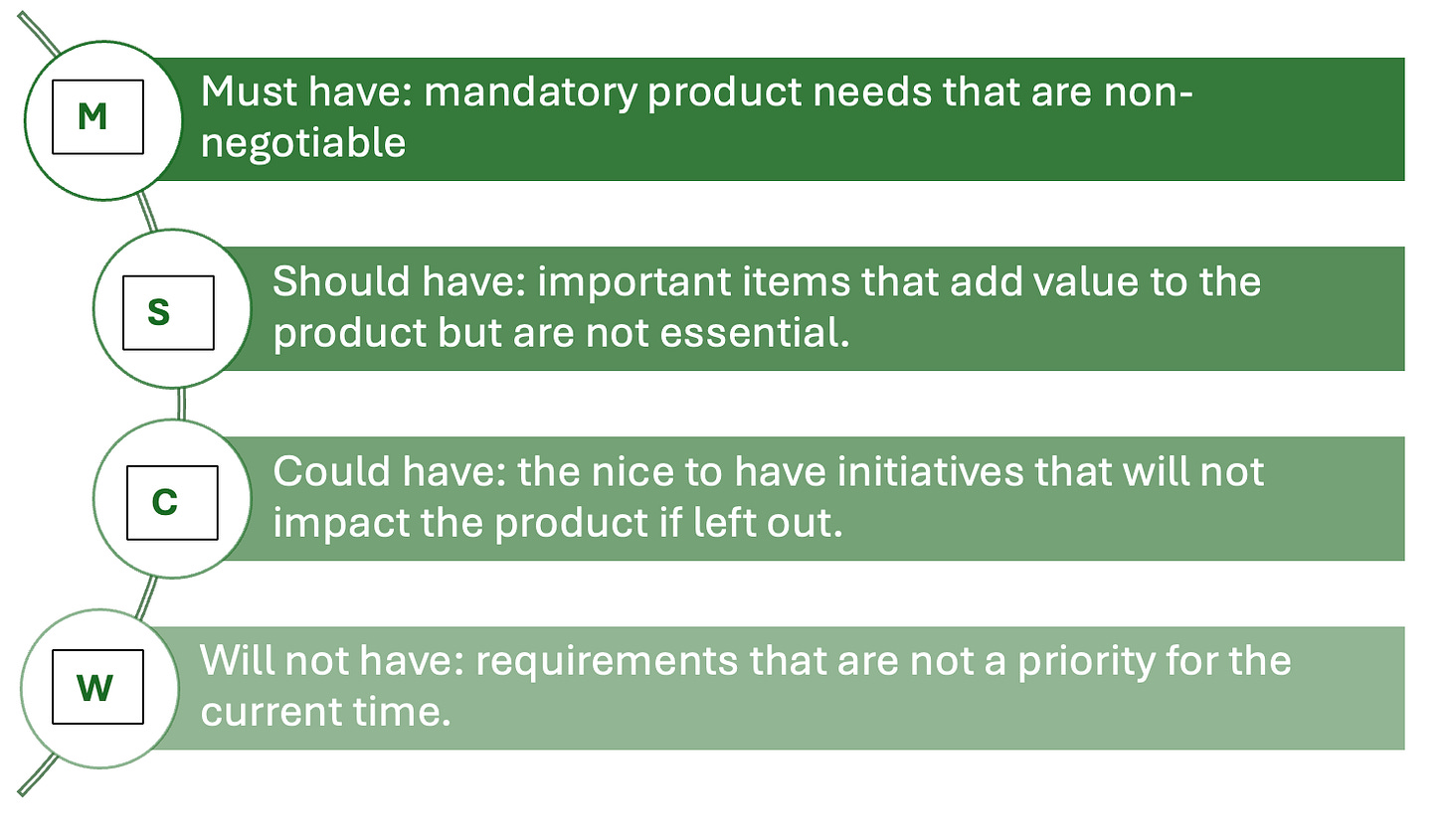Agile Challenges - Unclear Requirements and Tools to Help

Navigating the initiation phase of a project can often feel like steering through a storm of enthusiasm and expectations.
The pressure to kickstart proceedings is clear as stakeholders eagerly anticipate the promised outcomes.
However, amid this excitement, a significant challenge emerges: the uncertainty surrounding project requirements.
In project management, requirements serve as the guiding stars, delineating the path to successful project completion.
These requirements encompass a spectrum of tasks, conditions, and criteria, ranging from product features to service standards and operational processes. Their purpose? To tether project endeavours to the organisation's strategic objectives.
Planning is investing in fallacy. Only plan as much as you need - Ueli Brawand, Consultant
Here are four ways to clarify your requirements in an Agile setting.
1. User Stories and Acceptance Criteria
In project management, clarity is king.
Understanding user stories and acceptance criteria is crucial for teams to navigate the complex landscape of product development with clarity and purpose.
User stories are narratives that bring the project to life by capturing the end user's perspective.
They capture the essence of a feature or functionality, providing valuable insights into its value proposition and the problems it seeks to address.
Imagine this: A team of experienced developers is working on a mobile banking app and, through stakeholder consultation, has created a user story that states, "As a customer, I want to transfer funds between my accounts in order to manage my finances seamlessly." This statement effectively communicates the user's requirements and provides clear guidance for the development efforts.
E-book Giveaway
Not sure of the difference between a sprint review and a retrospective, or does the thought of an agile release train conjure images of an actual locomotive? Then this eBook is for you.
Time is running out for you to access this ebook. You can access this for free for the next 5 days only.
Tip: add the Discount Code “Getfree” at the checkout
Whether you're a seasoned Agile practitioner, new to the methodology, or transitioning from traditional project management, this eBook will enhance your ability to communicate, collaborate, and excel in Agile environments.
Dive in and empower yourself with the knowledge to master Agile terminology and concepts, making your Agile journey smoother and more effective.
Complementing user stories are acceptance criteria, which play an important role in defining success.
These criteria serve as detailed guidelines, enabling the team to gauge the progress of a user story against specific benchmarks.
In the case of our mobile banking app, the acceptance criteria would include requirements like the ability to transfer funds between designated accounts within a specified time frame. This ensures a seamless and hassle-free user experience.
Teams can efficiently manage user stories and acceptance criteria using Jira, Trello, or Asana tools.
These applications allow for tracking of progress and ensure alignment with project objectives.
Summing Up
When executed with precision, user stories and acceptance criteria lay the foundation for successful project outcomes.
2. Backlog Refinement and Prioritisation
In Agile project management, the process doesn't stop after creating user stories.
It continues into backlog refinement and prioritisation. Executing these twin processes is crucial for achieving project success.
Backlog refinement is similar to tending to a garden, where careful attention is given to each plant. It requires;
🔍a comprehensive examination of the backlog,
✂️refining user stories to include important details,
❓resolving uncertainties and
🚀removing unnecessary elements that could impede progress.
Picture a project team working on a software application for a multinational corporation. During backlog refinement, they analyse each user story, clarifying details, resolving any remaining uncertainties, and simplifying complicated stories into more manageable parts.
This process ensures that the backlog is carefully maintained as a collection of actionable tasks ready to drive the project's progress.
However, refining user stories is only the beginning; true expertise is demonstrated in prioritisation.
It's all about making strategic decisions on which user stories to tackle first, taking into account factors such as value, urgency, and interdependencies.
Tools such as MoSCoW, Kano, or RICE can be incredibly helpful in streamlining the prioritisation process.
Let's take another look at our software development team. Their expertise in the MoSCoW method allows them to prioritise their efforts on high-impact features that closely align with the client's goals.

Estimating effort and complexity is a crucial aspect of prioritisation; having a good grasp on this can make all the difference. Tools such as Planning Poker, Fist of Five, or Dot Voting can be incredibly useful in this process. With the expertise of the team, these tools make it easier to reach a consensus and approach user stories with a practical understanding of the necessary resources.
Summing Up
Backlog refinement and prioritisation lay the foundation for project teams to achieve outstanding results that go above and beyond expectations.
3. Prototyping and Feedback
Prototyping is a crucial aspect of project development, representing the forefront of innovation and collaboration. It's the art of bringing ideas to life, turning concepts into tangible representations of a product or service.
Project teams use powerful design tools such as Sketch, Figma, or Balsamiq to dive into the world of creation, crafting mockups and simulations that lay the foundation for their vision.
Picture a team assigned to transform the e-commerce experience. With their expertise, they craft a mockup of a digital storefront that combines easy-to-use navigation, intuitive product displays, and efficient checkout processes.
With these prototypes in hand, they set out on a journey to gather feedback, inviting stakeholders, team members, and customers to explore and engage with their creations.
Feedback is crucial for driving innovation, and the team uses tools such as SurveyMonkey, UserTesting, and Hotjar to collect valuable insights and perspectives.
Stakeholders offer valuable input on the storefront's visual aesthetics, team members identify potential usability issues, and customers share their preferences on payment methods.
“This feedback loop is crucial in guiding the team to refine their prototypes and better meet user expectations.”
However, feedback goes beyond just gathering opinions; it involves extracting insights and facilitating continuous improvement.
Equipped with a wealth of feedback data, our e-commerce team delves into the prototyping process, making adjustments to designs, refining functionalities, and perfecting user experiences.
With each iteration, they continue refining their product, combining creativity and focusing on the customer to strive for perfection.
Summing Up
When done with precision, prototyping and feedback collection can greatly accelerate project teams towards achieving success.
They deeply understand experimentation and learning, constantly refining their prototypes and seeking feedback to ensure they deliver a product or service that goes above and beyond their users' expectations.
4. Collaboration and Communication
In Agile project management, collaboration and communication are essential for building successful outcomes.
These twin pillars enable smooth coordination, knowledge sharing, and conflict resolution, ensuring that teams navigate the complexities of their projects with knowledge and flexibility.
Imagine a project team starting the development of a new mobile application. With a deep understanding of Agile principles, they apply collaboration tools such as Slack, Zoom, or Teams to facilitate real-time communication and foster a sense of team solidarity.
Whether it's a quick stand-up meeting to synchronise progress or a brainstorming session to tackle a complex problem, these communication channels facilitate the exchange of ideas and insights.
However, effective communication is just one aspect of the equation; successful collaboration thrives when fueled by shared creativity.
Powerful tools such as Miro, Mural, or Jamboard expertly convert virtual spaces into digital canvases, perfect for brainstorming, ideation, and problem-solving.
The mobile app development team collaborates seamlessly, using virtual whiteboards to create user interface designs, plan user journeys, and refine feature concepts with expertise and efficiency.
It is also crucial to emphasise the importance of documentation.
Platforms such as Confluence, GitHub, or GitLab are excellent tools for storing project knowledge and preserving important decisions, code snippets, and valuable insights for future reference.
They offer a comprehensive understanding of project objectives and key milestones, guaranteeing that each team member is on the same page and empowered to contribute their knowledge and skills.
However, it's important to note that Agile tools are not the sole factor in improving processes and efficiency.
Summing Up
The complexity of the tools used does not determine true success; it is determined by the genuine connections established between stakeholders, team members, and customers.
Regular and effective communication is crucial in Agile project management. It enables teams to quickly adapt to changing needs and feedback and successfully navigate through a constantly shifting landscape.









